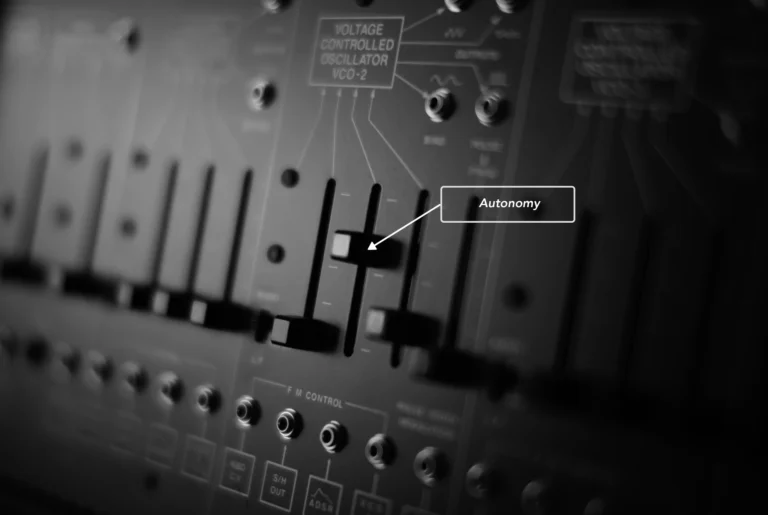There’s no doubt that 5G is here to stay in the robotics industry. Between high speeds that enable improved bandwidth and latency to greater network coverage, it enables robots to perform better than ever before. But once you’ve decided to upgrade, now comes the next challenge: how do you find the right 5G hardware for your robot?
Luckily, upgrading your robot to a 5G network won’t require a significant amount of hardware to install or time spent troubleshooting given that the majority of robots will only need a new modem or hotspot to be able to utilize 5G networks. However, there are a few extra considerations before jumping to buy the right hardware, and not every modem will be the perfect fit without a little bit of research, first.
Let’s dive into what hardware you need to get your robot running on 5G.
How do I know what’s right for my robot?
The type of modem your robot requires depends on the type of robot and the conditions it will be working in. First, you’ll need to consider a few details before deciding what specific type of hardware will be the best pairing for your robot, including the type of environment the robot is working in and the budget for the hardware.
If your robot is working outdoors, you’ll need to ensure you buy a modem that’s ruggedized so your 5G hardware won’t be harmed by weather such as extreme temperatures, moisture, or dust and dirt. A ruggedized modem is also best for robots that are moving back and forth between outdoor to indoor environments so that operators don’t have to worry about conditions when switching between environments. Also important to consider for robots that change environments is the ability to store multiple SIM cards with hot failover for a seamless transition between network providers, and easier handoffs between 4G/LTE/Wifi. This ensures that if, for example, a robot is transporting goods inside a storage facility directly from a crop field, it won’t experience a network dropout.
Another important element to consider is budget. Ruggedized, high-end modems can cost up to $3,000, per modem for each robot in your fleet but will ensure you encounter very few issues during operation. For a robot that solely works inside, a non-ruggedized modem is the best choice as it will cost less overall without extra protection that isn’t needed. However, it’s important to remember that when working with higher-value robots, choosing a budget option won’t provide all the features needed to properly support it.
“If you have a valuable robot, you want to avoid using something such as a MiFi or hardware that’s unmanaged on it,”, says Roger Billings, Sales Engineering Leader, 5G Strategy & Global Carrier Opsat Cradlepoint. “It’s critical that you’re able to manage your network and understand what’s going on, such as connection speeds or failure status.”
A more affordable option for 5G hardware is an integrated carrier board. These provide the signal and power to the CoM (computer on module) and offer a set of connectivity interfaces at a lower cost than modems, typically up to $500. They can be purchased for common hardware compute modules such as the NVIDIA Jetson platforms, or come already integrated with some compute modules like the Qualcomm RB6.
An important consideration when choosing between price points is that while a budget option can save money at the time, a gap in connectivity when working with high-value robots or large fleets can cost more in the end. A dual-modem router costs more upfront, but it will allow for guaranteed connectivity while operating. “With higher budget options, there is no downtime if something were to go wrong. Additionally, some operations are looking at Private Cellular Networks so that they have complete control over network performance. Use cases now involve setting up a private network on-premises to guarantee performance, but having a dual modem on the unmanned system can fail over to a public network if the robot leaves the boundary of the private network. “The cost of downtime is the most critical thing.”, advises Roger Billings.
Of course, if you’re just starting out with robots or keep a small fleet of just a few, a great budget option is a 5G mobile hotspot. These can be purchased almost anywhere, including Amazon, and you likely won’t have to exceed over $500 for one. However, it’s important to remember that with a lower budget does come less reliability and no management features, as mentioned above. Since most mobile hotspots don’t have external antennas, their connection can be worse at times and potentially affect the operation and productivity of your robot.
Is one network enough?
Whether you’re planning on purchasing a modem, router, or even a hotspot, there comes the question of whether one is enough to provide proper coverage. Since 5G operates on a higher frequency than previous technologies, its increased data transmission capabilities come at the expense of range and wall penetration. To combat this, network providers are deploying many more base stations on network towers around cities. Even still, these networks are not all yet built out and it will take time for all carriers to catch up to the coverage of the previous generation.
Therefore, if you’re working with a fleet of robots, especially those that are mobile, in an outdoor environment it’s good to keep consistent coverage in mind when selecting hardware. Best practice is to select a few that operate on different network providers, or modems with multiple SIM cards, to ensure as high reliability as possible.
Recommended 5G Hardware For Robots
Based on where you fall with your needs and budget, here are a few options that are popular within the market of 5G robotics hardware.
Industrial-grade Modems:
- Cradlepoint IBR1900
- Cradlepoint’s top 5G option with dual-modem support
- Ruggedized to hold up well outdoors
- Peplink Max BR2 Pro
- Great option for indoor robots
Not ruggedized or optimal for outdoor environments
- Viprinet Multi-Channel VPN Router
- High bandwidth and GPS function allows router to be located at any time
- HMS Industrial Router
- Great beginner option to help evaluate and start up your own network
- Milesight UR75 5G
- Good fit for harsh environments, operating temperatures are -40 degrees to 70 degrees celsius
Integrated Carrier Boards:
- Qualcomm RB6
- New offering as of June 2022
- Great option for AMRs (autonomous mobile robots)
- Integrates camera, computer vision, AI, and 5G hardware needs
- Qualcomm RB5
- Designed for harsh manufacturing conditions
- Offers 5G connectivity, on-device AI and machine learning, superior computing, and intelligent sensing capabilities
Low-cost 5G hotspots:
- T-Mobile Inseego 5G MiFi M2000
- Enterprise-grade VPN to ensure all data is secure
- Netgear Nighthawk 5G Mobile Hotspot Pro
- Can be setup without long-term contract or phone plan
You’ve got the hardware; now learn why 5G will be a game-changer in robotics, here.



